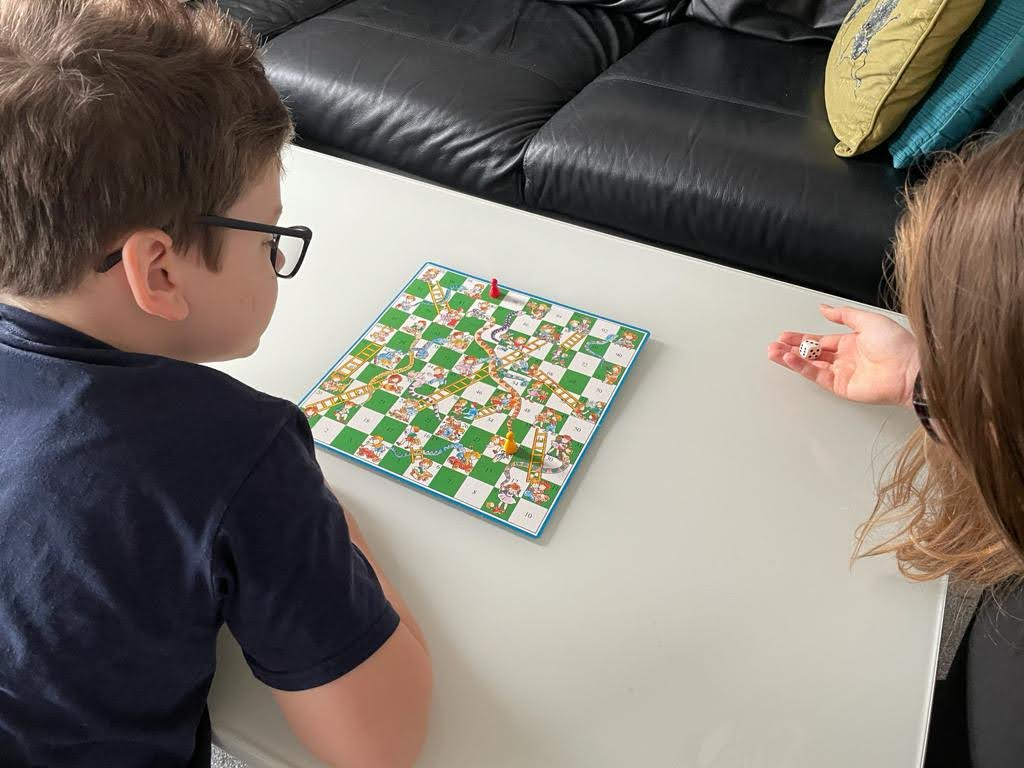A game of snakes and ladders – that is how my 9-year-old son describes lockdown. This piqued my interest, and I was drawn away from my online virtual marking and gazed at him across the kitchen table to ask him to explain his metaphor.
Zac is in Year 5 in an expanding multiphase academy, where his sister Annie is in Year 8, and I am Second in Science in the secondary phase. This gives me a unique insight into the teaching and learning blended provision from a teacher’s point of view; a parent; and from my own children.
Reflecting on his experience of lockdown, Zac said that it was like everyone was playing snakes and ladders. Some of his friends had moved up a ladder making great leaps in schoolwork, while others slid down a snake. He talked of friends that, before lockdown, had the most beautiful handwriting, always answering questions in class, who now could barely hold a pen and rarely took part in zoom lessons. Whereas other students that were quiet in the classroom, were bubbly on screen and were now excelling.

So, how do we roll the dice in the favour of teaching and learning during lockdown and beyond?
Encourage Social Interactions
School children have moved from ‘in school’ learning via blended learning, to home learning in a very short space of time. This has had an impact on how young people can socialise, and it makes it difficult to scaffold friendships without face-to-face opportunities. However, the use of synchronous assemblies can be one way to help plug this gap.
Annie’s highlight of the virtual school week is her tutor zoom, where she gets her social fix with her form tutor and classmates. The sessions have a theme, rather like an assembly, and the students are encouraged to share their thoughts and ideas in the chat function, as well as using emotion buttons and participating in the conversation. Zac also enjoys his zoom lessons where he gets the chance to see his classmates, as well as take part in discussions about the topic-based curriculum that he has been learning at home.
In many of the online learning platforms and video conferencing software being used for live lessons, the chat function can be used to encourage students to discuss ideas and spark conversations and can give a ‘voice’ to the more introverted students. The use of moderated breakout rooms also scaffolds students to converse with each other. Using support staff like learning assistants can allow more than one learning facilitator in the same live lesson encouraging the interaction between students.
Home Learning and Digital Learning balance
The UK government has issued direction to the amount of remote learning that a child should expect based on their key stage. So, for secondary school students we should be aiming for a minimum of five hours a day. However, it is worth remembering that, the pre-lockdown school day may-well have been made of five hours of lessons, but this did not mean that there were five hours of intense learning. Each lesson is peppered with getting into the classroom, setting up, taking the register, handing in homework, not to mention the casual chats with friends and of course the packing away – all eating into learning time.

Setting achievable learning support
So, the move to home learning with a parent or carer watching over a young person makes for a far more intense experience. Not to mention, the need for new IT skills that have not been taught and are just ‘assumed’. This can lead to genuine tiredness and fatigue. As teachers we need to be mindful of the learning that we are setting in order that it is achievable, requiring minimum adult support from home (as they are likely to be working too) and a mix of non-screen, synchronous and asynchronous content.
It is stressful for staff and students, keeping up with the demand for synchronous teaching and learning. Often it is difficult to juggle in terms of hardware, supporting children at home, as well as delivering online lessons. Embarrassingly, both Annie and Zac’s teachers have had the delights of a snippet of one of my science lessons, as we have all been on a zoom lesson at the same time!
Lastly, how are you?
And most importantly, how are you in all of this? Where are you on a snakes and ladders board? Remember that these are unprecedented times and there is a spectrum of right – you will be somewhere on that spectrum!

Sam was nominated in the Teacher Scientist category for the Science Council’s 100 leading practising scientists, is a Chartered Science Teacher, and holds a CPD Quality mark.
Sam Holyman is Second in Science at Aylesford School in Warwick, and formerly West Midlands ASE President. She is also the author of a number of best-selling science textbooks for KS3 and GCSE (including the AQA GCSE Foundation: Combined Science Trilogy and Entry Level Certificate Student Book), and a keen advocate of innovative teaching and learning.
